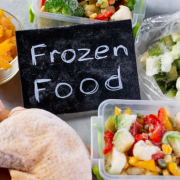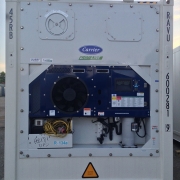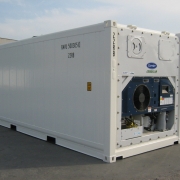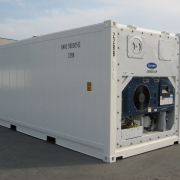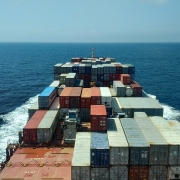National Frozen Food Month: A Frozen History
Did you know that March is National Frozen Food Month?
It is! From french fries to ice cream, ready-made dinners to homemade casseroles, pizzas to mixed veggies, chicken to vegan meat substitutes – we all have our favorites when it comes to the convenience of a thaw-and-cook meal. But frozen foods haven’t been around forever; not in the American market, at least.
Other cultures, such as ancient Chinese civilizations and the Inuit people, have been freezing their food long before frozen TV dinners and tater tots were introduced to us, and we owe it to them and a man in 1917 named Clarence Birdseye for the aisles upon aisles of frozen food available today.
Flash Freezing for Freshness
Birdseye realized, after studying Inuit methods of preservation, that freezing fish as soon as they were caught preserved their flavor and texture. This led to his conveyor-belt flash freezing invention in 1928 that used two hyper-frozen metal plates to chill and freeze the foods put through it, and the subsequent beginning of the frozen food industry in America. Some of the earliest frozen options included:
- Haddock fillets
- 17 other cuts of meat and fish
- Fruits like loganberries and raspberries
- Vegetables like spinach and peas
The Rise of Frozen Food
The invention of frozen food and flash freezing methods couldn’t have come at a more convenient time, as World War II started only 9 years after the establishment of Birdseye Seafood and Frosted Foods Company (already sold to Postum, Inc.) and the US entered the war in 1941. Most canned and packaged goods were sent overseas to troops, leaving America to depend heavily on the frozen food industry for fresh, preserved food. This is when frozen meals started rising in popularity, although the coined “TV Dinner” wouldn’t make an appearance on the major market until 1954.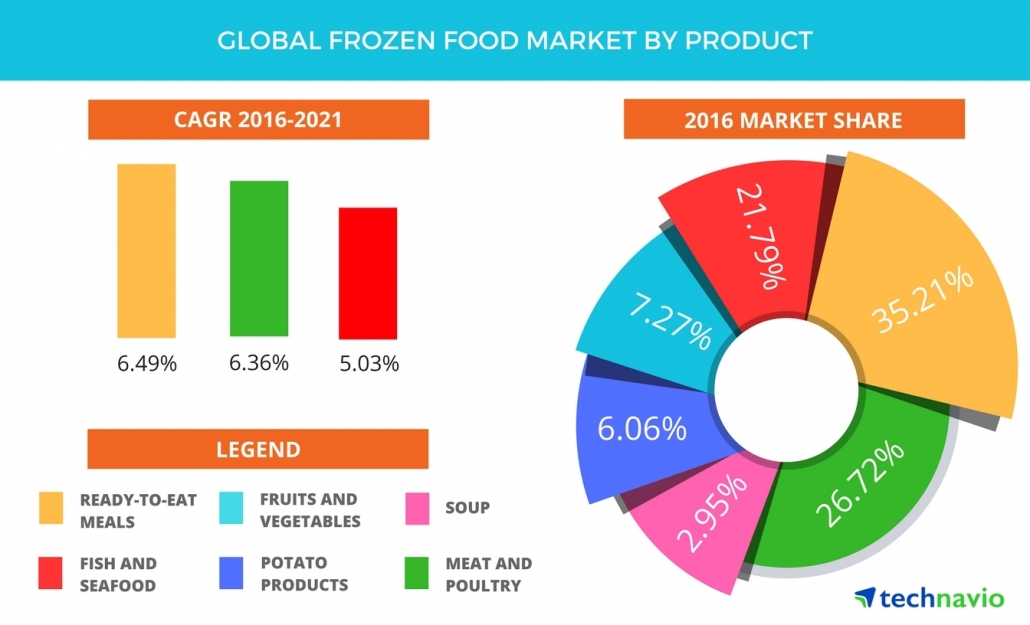
Following the up-and-coming methods of fresher food, other food industries began utilizing flash freezing methods for their products, such as breads, bagels, and foreign foods. While there was initial outcry from the consumers – from men who wanted their wives to cook from scratch and from women who didn’t like being lied to when bakeries claimed their bread was fresh but was actually thawed and baked after having been made days before – the convenience was too tempting and eventually happy mediums were established.
The Discovered Benefits of Frozen Food and Freezers
Those happy mediums were found by addressing misconceptions about frozen food: that it wasn’t as nutritional as fresh foods, that it changed the taste extensively, that it didn’t require any effort, etc. But once the convenience settled in, even without the proof that many of the misconceptions didn’t always hold water, frozen foods became an acceptable to incorporate into daily diets.
Since it doesn’t spoil as fast as fresh foods, frozen meats, fish, veggies, and fruits became a staple in households. Not only were people saving money with less food waste, they were also able to integrate healthier foods without the fear of it spoiling. As for the claim that frozen food isn’t as nutritious as fresh – that all depends on the product being frozen. Most foods will retain their nutrients just as well frozen as they do fresh, and there certain foods that actually retain them better frozen over time, like vegetables and fruit.
There will always be foods that aren’t suited to freezing, but the ones that are far outweigh those that don’t. Because we have frozen food available for longer at a reasonable price, nutritious foods are available to those that don’t have the financial, spatial, or temporal means to follow fresh, organic food trends.
Frozen food plays a big part in multiple facets of society today, and we’re glad to have it! Happy National Frozen Food Month!
Moon Refrigeration – Refrigerated Storage
Moon Refrigeration offers refrigerated, walk-in portable reefer containers for your restaurant or business with 20 and 40 foot options, world-class performance, energy efficiency, quiet operation, reliability, and PrimeLINE Technology. We work hard to meet all your short-term and long-term needs, providing fast, reliable, and affordable service at a day’s notice. We proudly serve the Louisville, Southern Indiana, Lexington, and the surrounding regions as one of Kentucky’s largest full-service leasing companies, and can also offer dumpster and portable restroom rentals, trailer leasing, grease trap cleaning, and much more! Interested in getting started? Give us a call or visit our website today!


